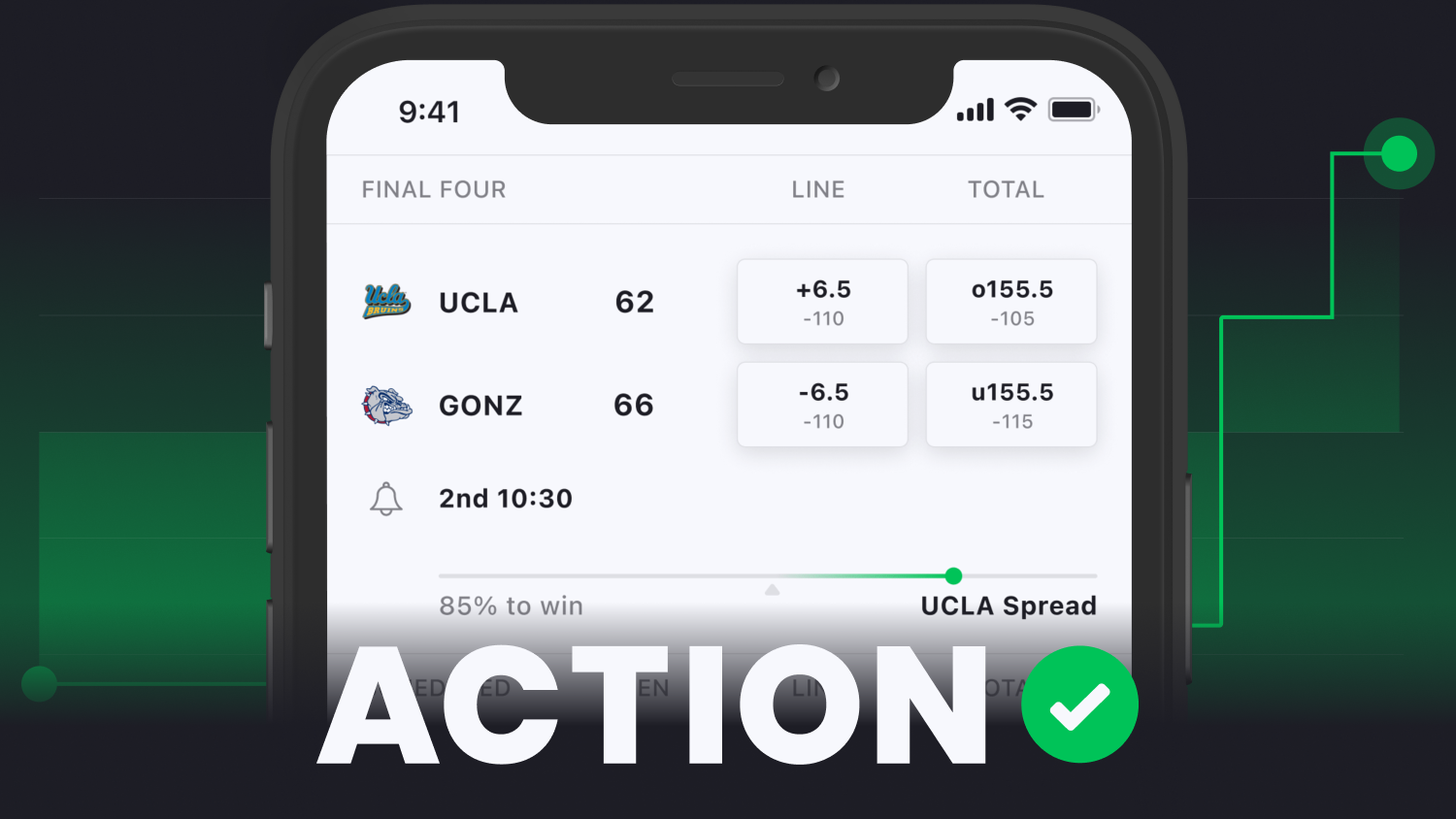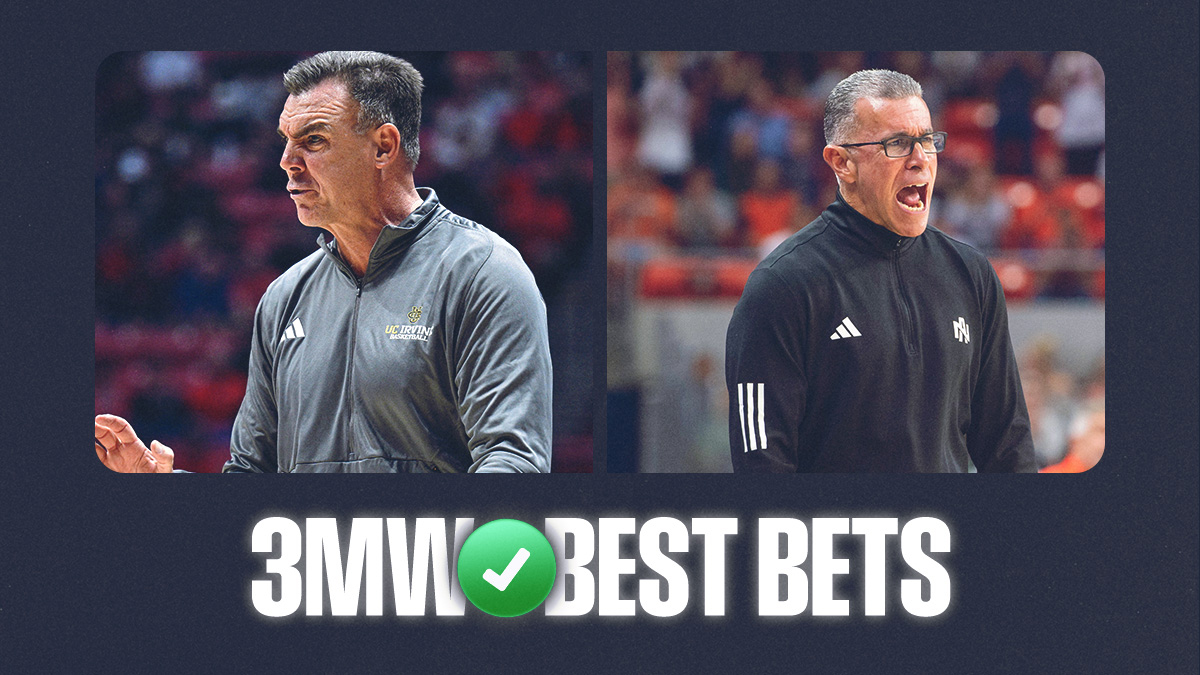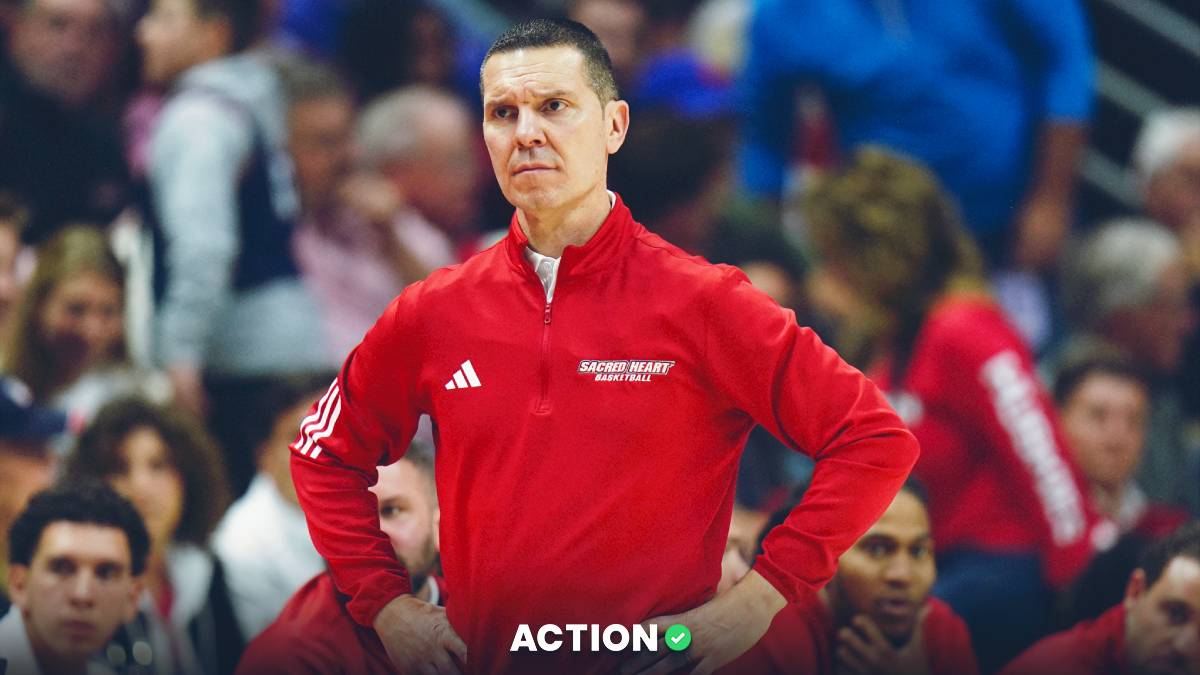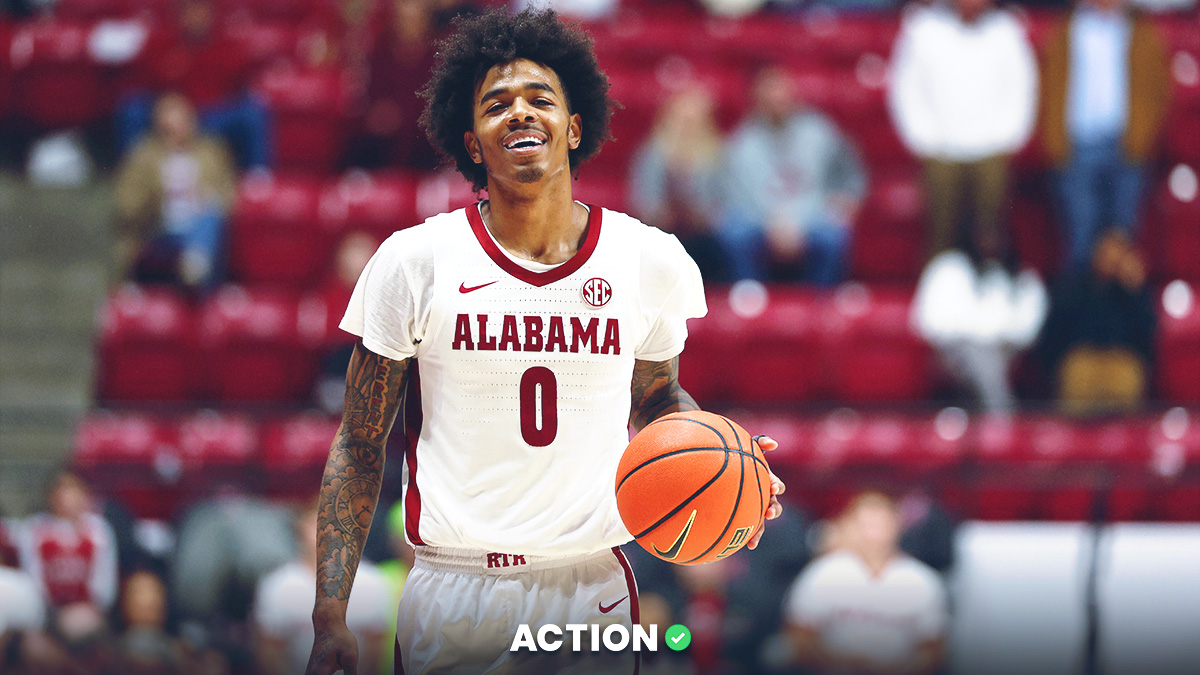UCF vs Texas Tech Odds, Pick
| UCF Odds | ||
|---|---|---|
| Spread | Total | Moneyline |
+7.5 -110 | 137.5 -105o / -115u | +270 |
| Texas Tech Odds | ||
|---|---|---|
| Spread | Total | Moneyline |
-7.5 -110 | 137.5 -105o / -115u | -350 |
Grant McCasland built a defensive powerhouse at North Texas, with the Mean Green reaching top-20 national marks in defensive efficiency during the final year of his six-year tenure. They even reached the second round in 2021 after upsetting Purdue in overtime.
So, naturally, McCasland has likely improved Texas Tech’s defense immeasurably in his debut season, right?
Wrong.
It’s unreal to see it laid out on my laptop screen, but the Red Raiders rank first in the Big 12 in conference-play offensive efficiency and dead last in defensive efficiency.
It’s all coming from hot 3-point shooting, both ways, but it’s jarring nonetheless.
Meanwhile, Johnny Dawkins has built a legitimately elite defense in Central Flordia. The Knights rank 10th nationally in defensive efficiency.
But they can’t score worth a lick, so they’re hovering near the Big 12 cellar.
I’m fascinated by this matchup, and Texas Tech needs a win to avoid a catastrophic four-game losing skid after starting Big 12 play 5-1.
And that piece is perfect to plug here because UCF is another dominant ball-screen blitzing, rim-denial defense.
Shemarri Allen is a devastating point-of-attack ball-screen coverage defender, and Dawkins leverages him by sending two to the ball on every screen.
Like this:

You should read more about ball-screen blitz coverages in my film piece. Still, the basic premise of the scheme is that the screener’s defender attacks the pick-and-roll ball-handler alongside his fellow defender in a type of “trap” or double-team, and the rest of the defense rotates. It baits ball handlers into challenging, lengthy passes to roll-men or weak-side shooters, and good blitz defenses pick those off.
Additionally, if the ball ever does get through to the interior, via the roll-man or otherwise, these schemes thunderously come down on men in the paint, often leaving perimeter shooters to do so.
Here’s a good example from my piece about Iowa State’s rim-denial defense:
"Check out this play: Jones is already anchoring the paint, mirroring TCU big man Ernest Udeh Jr. But as Micah Peavy drives the lane, Demarion Watson slides across the baseline to stop the first layup attempt, passing it to the other block, where Milan Momcilovic recovers and blocks Emanuel Miller's next attempt.
There are literally four Cyclones denying the rim, which is what Otzelberger wants."
Altogether, good ball-screen blitz defenses deny pick-and-roll sets, deny the rim, and force turnovers at a high rate, but they also sacrifice open 3-point looks in the process.
UCF excels at this, checking in as an elite pick-and-roll (.62 PPP allowed, top-five nationally) and paint defense (25 paint points per game allowed, top-15 nationally) while ranking top 15 in both block rate and steal rate.
Allen is the main attacker on the perimeter (two steals per game), and 7-foot Ibrahima Diallo is the primary rim protector (two blocks per game).
However, everybody gets in on the action. Keep a close eye on Darius Johnson and Jaylin Sellers on the defensive end.
The ball-screen blitz can be exploited by crisp perimeter passing teams with great spot-up shooters, given the scrambling nature of the scheme. Texas Tech currently lands in that category, although I expect Red Raider shooting regression post haste.
Dawkins mixes man-to-man and zone looks, but every coverage is aggressive. The Knights rank in the top 20 nationally in press usage (381 possessions in total).
The Knights are similarly elite against secondary actions but can be exposed in isolation. Texas Tech needs to find iso creators in this matchup, as the easiest way to circumvent the blitz is to ditch ball-screen offense altogether and lean into hero ball.
There is so much to love about UCF’s defense.
But there is so much to hate about UCF’s offense.
The Knights can’t score on any set. The only viable path to offense is on the glass, as they rank in the top 50 nationally in offensive rebounding rate while generating 12 second-chance points per game (79th percentile).
Texas Tech is shooting the damn lights out.
The Red Raiders are shooting 41% from 3 in conference play. They’re taking good shots (43rd in ShotQuality’s Shot Selection metric) with good spacing (50th in Spacing) and making them (42nd in Shot Making).
I often found that the Raiders weren’t very apt at creating or dribble-penetrating when watching them in the early season. Thus, they often fell back on jump shots, which I thought was an ugly way to play basketball.
But right now, the shots are falling.
And I have to be honest: I think my early-season analysis needs some updating.
Texas Tech’s ball-screen metrics are pretty good (1.02 PPP, 70th nationally). Pop Isaacs and Joe Toussaint are becoming elite ball-screen and dribble creators.
Even their secondary actions generate buckets (1.10 off-ball screen PPP, 77th nationally; 1.49 cutting PPP, 20th nationally).
The Red Raiders can score.
But their shooting level is totally unsustainable. ShotQuality projects they should be shooting closer to 36% based on the “quality” of attempts, and they’re not creating enough open jumpers, with 55% of their catch-and-shoot opportunities being guarded.
Similarly, their 3-point defensive metrics are unsustainable. Opponents are shooting 38% from 3 in conference play, but ShotQuality projects that number closer to 35% on the “quality” of attempts allowed.
Some Texas Tech Big 12 box scores read like a comic novel.
- TTU shot 14-for-28 (50%) from 3 against TCU, while TCU shot 11-for-20 (55%)
- TTU shot 9-for-23 (39%) against OU, while OU shot 11-for-26 (42%)
- TTU shot 10-for-20 (50%) against BYU, while BYU shot 13-for-39 (33%)
- TTU shot 7-for-13 (54%) against OKST, while OKST shot 9-for-25 (36%)
- TTU shot 10-for-29 (35%) against ORU, while ORU shot 16-for-36 (44%)
- TTU shot 13-for-26 (50%) against Butler, while Butler shot 12-for-27 (44%)
- TTU shot 14-for-36 (39%) against NOVA, while NOVA shot 9-for-24 (38%)
This level of shot-making shouldn’t happen at the collegiate level. I’m unsure if it should be allowed on public television.
Texas Tech is allowing a few too many good 3s, ranking 13th in the Big 12 in Open 3 Rate allowed. Still, 38% is unsustainable.
And if a few more shots brick against them, the Red Raiders could see a decent boost in their defensive metrics.
McCasland is a Scott Drew Baylor disciple who runs a no-middle defensive scheme. The coverage forces ball-handlers to the sideline and baseline while keeping the ball out of the paint at all costs.
Like UCF’s ball-screen blitz, the no-middle is relatively aggressive and vulnerable to weak-side shooters, which explains some of Tech’s numbers.
But the Raiders are effectively denying the paint, ranking well above the D-I average in near-proximity field goal attempt rate allowed (31%) and paint points per game allowed (27). Warren Washington and Darrion Williams have been stud post-up defenders, with Washington swatting 1.6 shots per game.
That’s good. That means the no-middle is working.
The biggest issue for Texas Tech moving forward is the rebounding. The Raiders have been bludgeoned on the glass by every Big 12 opponent during conference play, ranking 12th in the conference in offensive rebounding rate and last in defensive rebounding rate.
That could be a massive problem against UCF, which relies almost exclusively on offensive rebounds to generate offense.

UCF vs Texas Tech
Betting Pick & Prediction
The situational spot favors Texas Tech. I can’t imagine the Red Raiders succumbing to their fourth consecutive loss in Lubbock. They should be fired up.
There’s not much value from a numbers perspective. Most projection systems I trust make Tech around a six-point home favorite over UCF.
But I can’t help myself. I quite like the schematic matchup for UCF.
UCF viciously denies ball-screens, secondary actions and the rim. The Knights should shut off the Raiders’ favorite avenues to offense, and I trust Johnson/Allen/Sellers to shut down Toussaint/Isaacs.
Obviously, Texas Tech has a significant advantage from the perimeter, as the Raiders should generate plenty of open 3-point looks against UCF’s blitz.
But it’s time for the Red Raiders to see some shooting regression. If they want to cover a two-possession spread against UCF, they’ll have to keep shooting over 40% from 3, and I’m banking on that not happening.
On the other end of the floor, UCF heavily relies on offensive rebounds, and the Knights can’t score against good defensive rebounding teams.
But lucky for Dawkins, Texas Tech is a pushover on the glass, and the Knights might actually put up some points here, even if it all comes on second-chance opportunities.
If the Raiders shoot 44% from 3, I’ll have to tip my cap and move on. But I’m grabbing the points with Dawkins, Allen Diallo and the Knights’ uber-stout defense and active O-Glass unit.
It's also worth mentioning that UCF will have a fairly significant rest advantage, as the Knights haven't played since last Saturday, while the Raiders got in a physical battle with Baylor on Tuesday. I think the extra two days of rest and prep mean something.
Regarding the number, the market is pricing in Texas Tech's bounce-back situational spot. In this case, it's resulted in a wildly inflated number. KenPom and BartTorvik project the Raiders as six-point home favorites over UCF, EvanMiya projects them at seven, and ShotQualityBets projects them at four.
Even our Action PRO projections have the Knights as 5.5-point road dogs.
We're getting a good price with a team that matches up well schematically. Hopefully, the Raiders don't blow out the Knights behind a must-win performance and more unsustainable 3-point shooting.
Pick: UCF +7.5 (Play to +6)
The new ESPN Sportsbook is now online and you can use Action’s ESPN BET promo code TANBONUS for a new user welcome.




















































